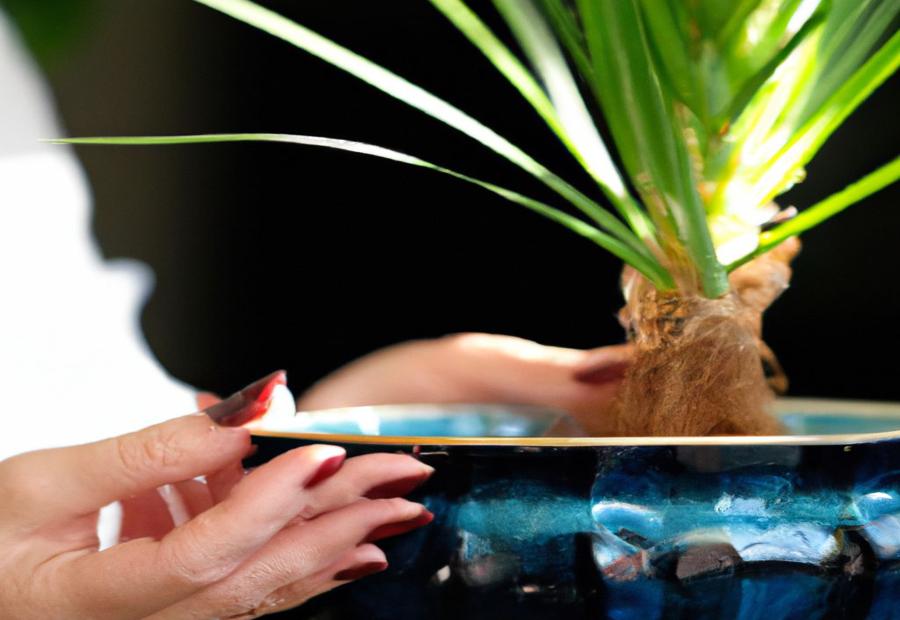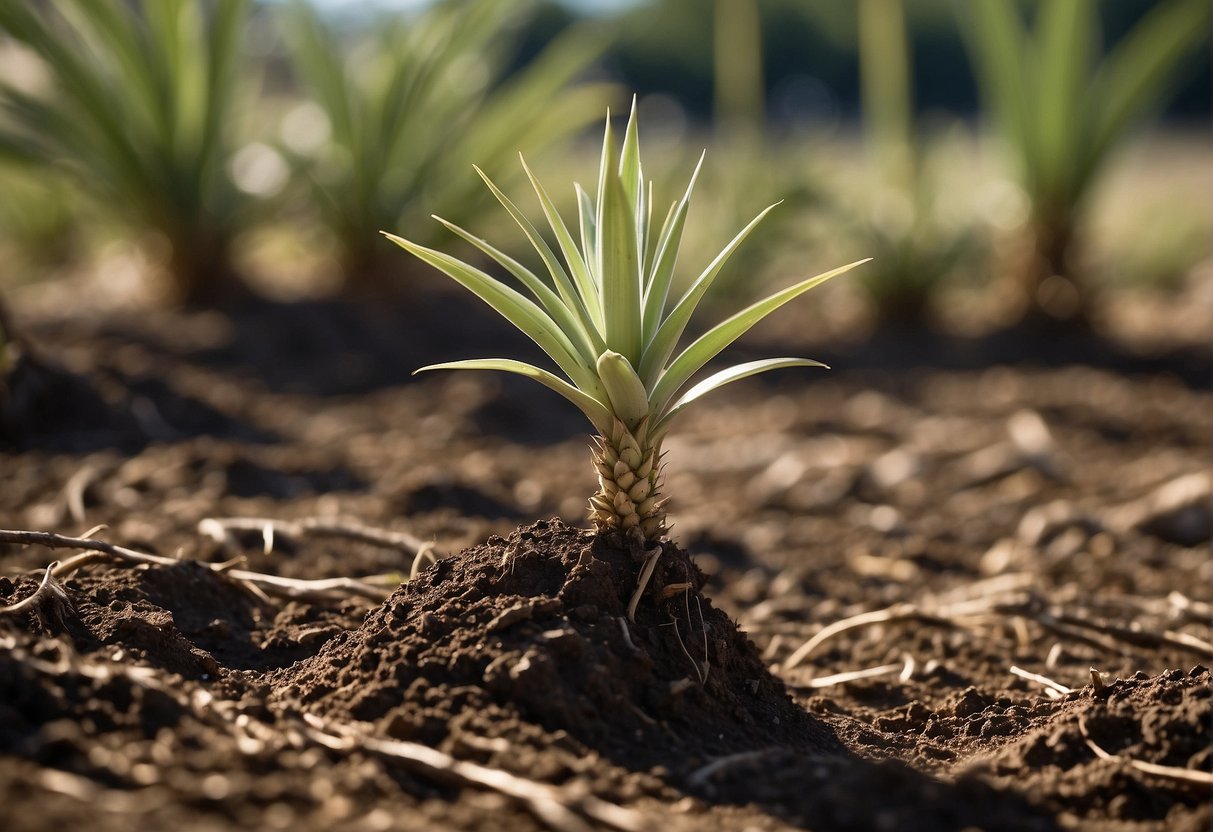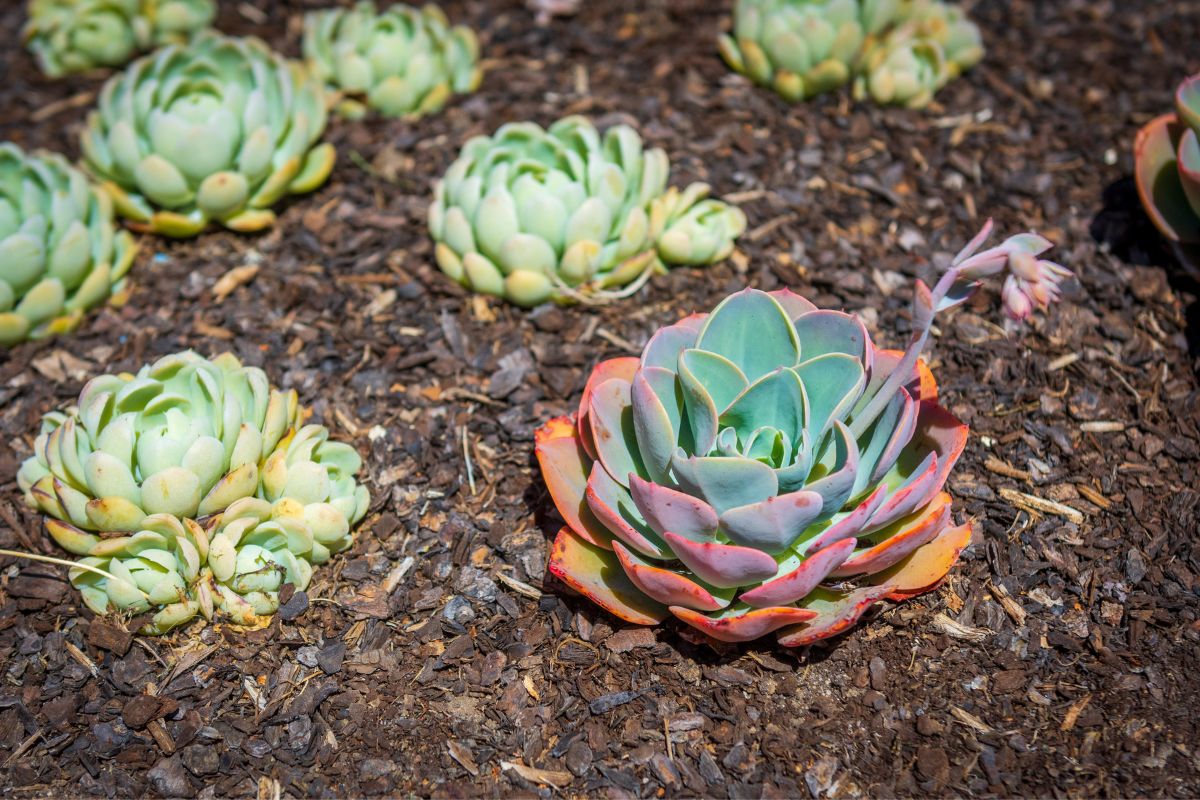Why Replanting Your Yucca is Necessary
Yucca plants are known for their resilience and ability to thrive in challenging environments. However, there are situations where replanting is necessary to ensure the continued health and well-being of the plant. One common reason for replanting a yucca is when it has outgrown its container. As the plant grows, its roots can become constricted, leading to a decrease in water and nutrient uptake. Replanting the yucca in a larger container with fresh soil can provide the necessary space for the roots to expand, promoting healthy growth and development.
Another reason for replanting a yucca is when it is showing signs of disease or pests. If left untreated, these issues can spread quickly, causing significant damage to the plant. Replanting the yucca in a new container with sterile soil can help to eliminate any lingering pathogens or pests, giving the plant a fresh start. Additionally, replanting can be necessary when the yucca requires a change in environment. For example, if the plant is not receiving sufficient light or is exposed to extreme temperatures, replanting it in a more suitable location can help to promote optimal growth.
Replanting a yucca can seem like a daunting task, but with the right knowledge and preparation, it can be a straightforward process. By understanding the reasons why replanting is necessary, you can take the first step towards giving your yucca the care it needs to thrive. Whether you’re looking to learn how to replant a yucca or simply want to provide your plant with a fresh start, the process can be a rewarding experience that promotes healthy growth and development.
Preparing Your Yucca for Replanting
Before replanting a yucca, it’s essential to prepare the plant properly to ensure a successful transition. One of the most critical steps in preparing a yucca for replanting is pruning. Pruning helps to maintain the plant’s shape, promotes healthy growth, and encourages new blooms. When pruning a yucca, remove any dead or damaged leaves, and cut back any overgrown stems to encourage new growth.
In addition to pruning, it’s also important to clean the yucca plant thoroughly before replanting. Remove any debris or dirt from the leaves and stems, and gently wash the roots with water to remove any dirt or bacteria. This helps to prevent the spread of disease and ensures a healthy start for the plant.
Inspecting the roots for damage or disease is also crucial when preparing a yucca for replanting. Check the roots for any signs of rot, decay, or damage, and trim away any affected areas. This helps to prevent the spread of disease and ensures the plant can absorb nutrients and water properly.
By following these steps, you can help ensure your yucca plant is properly prepared for replanting. When learning how to replant a yucca, it’s essential to take the time to prepare the plant correctly to ensure a successful transition. With proper preparation, your yucca plant can thrive in its new environment and provide years of beauty and enjoyment.
Selecting the Perfect Container and Soil
When it comes to replanting a yucca, selecting the right container and soil is crucial for the plant’s success. The container should be large enough to accommodate the yucca’s roots, with a minimum depth of 6-8 inches. A container that is too small can cause the roots to become constricted, leading to poor growth and health.
In addition to size, the container should also have good drainage holes to prevent waterlogged soil. Yucca plants are prone to root rot if the soil is too wet, so it’s essential to ensure that the container allows for proper drainage.
When it comes to soil, yucca plants prefer well-draining soil that is rich in organic matter. A mix specifically designed for cacti and succulents is ideal, as it will provide the right balance of nutrients and drainage. Avoid using regular potting soil, as it can retain too much water and cause root rot.
Some key factors to consider when selecting a soil mix for your yucca include drainage, aeration, and nutrient content. A good soil mix should contain ingredients such as perlite, vermiculite, or sand to improve drainage and aeration. It should also contain organic matter such as compost or manure to provide nutrients.
By selecting the right container and soil, you can provide your yucca plant with the best possible start for successful replanting. When learning how to replant a yucca, it’s essential to consider the specific needs of your plant and choose a container and soil that meet those needs.
A Step-by-Step Replanting Process
Now that you have prepared your yucca plant for replanting and selected the perfect container and soil, it’s time to begin the replanting process. Here is a step-by-step guide on how to replant a yucca:
Step 1: Handle the Roots with Care – When removing the yucca plant from its old container, be careful not to damage the roots. Gently rock the plant back and forth to loosen the soil, then lift the plant out of the container.
Step 2: Inspect the Roots – Inspect the roots of the yucca plant for any signs of damage or disease. Trim away any dead or damaged roots to prevent the spread of disease.
Step 3: Place the Plant in the New Container – Place the yucca plant in the new container, making sure the soil level is the same as it was in the old container.
Step 4: Add Soil – Add fresh soil to the container, making sure to fill in any gaps around the roots. Firm the soil gently to prevent settling.
Step 5: Water Thoroughly – Water the yucca plant thoroughly after replanting to settle the soil and provide enough moisture to support establishment.
By following these steps, you can ensure a successful replanting of your yucca. Remember to handle the roots with care, inspect the roots for damage or disease, and provide the right amount of water and nutrients for optimal growth.
Post-Replanting Care and Maintenance
After replanting your yucca, it’s essential to provide the right care and maintenance to ensure a successful transition. Watering is a critical aspect of post-replanting care, as the plant needs to establish a strong root system. Water your yucca plant thoroughly after replanting, and then reduce watering to once a week during the first few months.
Fertilizing is also important for promoting healthy growth and development. Use a balanced fertilizer that is specifically designed for cacti and succulents, and follow the instructions on the label for application rates. Avoid over-fertilizing, as this can cause more harm than good.
Monitoring for pests or diseases is also crucial after replanting. Keep an eye out for signs of infestation or infection, such as white powdery patches, black spots, or soft, mushy tissue. If you notice any of these symptoms, take action immediately to prevent the spread of disease.
In addition to watering, fertilizing, and monitoring for pests or diseases, it’s also important to provide your yucca plant with the right amount of light and temperature. Most yucca plants prefer bright, indirect light and temperatures between 65-75°F (18-24°C).
By following these post-replanting care and maintenance tips, you can help your yucca plant establish a strong root system and thrive in its new environment. Remember to be patient, as it may take some time for the plant to adjust to its new surroundings.
Troubleshooting Common Replanting Issues
While replanting a yucca can be a straightforward process, there are some common issues that may arise during or after replanting. One of the most common problems is root shock, which can occur when the roots are disturbed during the replanting process. To overcome root shock, make sure to handle the roots with care and provide the plant with plenty of water and nutrients.
Another common issue is transplant stress, which can occur when the plant is moved to a new environment. To minimize transplant stress, make sure to acclimate the plant to its new environment gradually, and provide it with plenty of water and nutrients.
Pest infestations are also a common problem that can occur during or after replanting. To prevent pest infestations, make sure to inspect the plant carefully before replanting, and treat any infestations promptly. Regularly monitoring the plant for signs of pests or diseases can also help to prevent infestations.
Other common issues that may arise during or after replanting include over-watering, under-watering, and nutrient deficiencies. To overcome these issues, make sure to provide the plant with the right amount of water and nutrients, and adjust the soil and fertilization accordingly.
By being aware of these common issues and taking steps to prevent them, you can ensure a successful replanting of your yucca. Remember to be patient and monitor the plant closely during the replanting process, and take action promptly if any issues arise.
Long-Term Care and Enjoyment of Your Replanted Yucca
With proper care and maintenance, a replanted yucca can thrive for years to come. One of the most significant benefits of replanting a yucca is improved growth. By providing the plant with a larger container and fresh soil, you can encourage healthy growth and development.
In addition to improved growth, replanting a yucca can also lead to increased blooming. Yucca plants are known for their beautiful flowers, and with proper care, you can encourage your plant to produce more blooms. To promote blooming, make sure to provide your yucca plant with plenty of sunlight, water, and nutrients.
Replanting a yucca can also lead to enhanced overall health. By providing the plant with a fresh start, you can help to prevent the spread of disease and pests. Regularly monitoring your plant for signs of disease or pests can also help to prevent infestations.
To continue caring for your replanted yucca, make sure to provide it with the right amount of water and nutrients. Water your yucca plant sparingly, allowing the soil to dry out completely between waterings. Fertilize your yucca plant regularly, using a balanced fertilizer that is specifically designed for cacti and succulents.
By following these tips, you can enjoy your replanted yucca for years to come. Remember to be patient and provide your plant with the right amount of care and attention. With proper care, your yucca plant can thrive and provide you with beautiful flowers and foliage for years to come.
Long-Term Care and Enjoyment of Your Replanted Yucca
Replanting a yucca can be a rewarding experience, and with proper care, your plant can thrive for years to come. One of the most significant benefits of replanting a yucca is improved growth. By providing the plant with a larger container and fresh soil, you can encourage healthy growth and development.
In addition to improved growth, replanting a yucca can also lead to increased blooming. Yucca plants are known for their beautiful flowers, and with proper care, you can encourage your plant to produce more blooms. To promote blooming, make sure to provide your yucca plant with plenty of sunlight, water, and nutrients.
Replanting a yucca can also lead to enhanced overall health. By providing the plant with a fresh start, you can help to prevent the spread of disease and pests. Regularly monitoring your plant for signs of disease or pests can also help to prevent infestations.
To continue caring for your replanted yucca, make sure to provide it with the right amount of water and nutrients. Water your yucca plant sparingly, allowing the soil to dry out completely between waterings. Fertilize your yucca plant regularly, using a balanced fertilizer that is specifically designed for cacti and succulents.
By following these tips, you can enjoy your replanted yucca for years to come. Remember to be patient and provide your plant with the right amount of care and attention. With proper care, your yucca plant can thrive and provide you with beautiful flowers and foliage for years to come.







